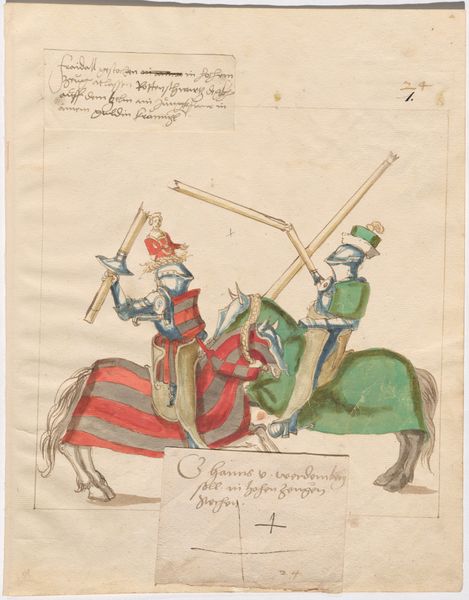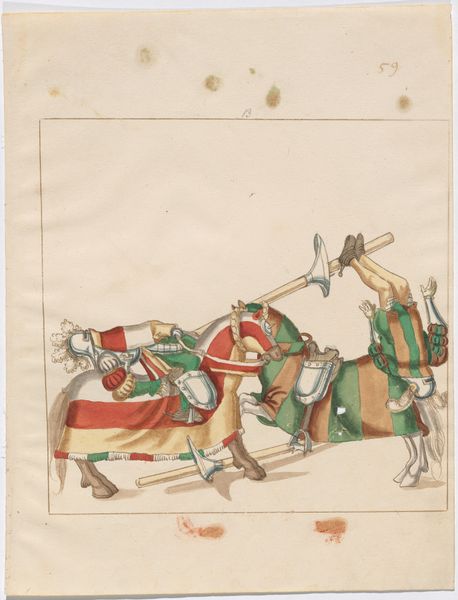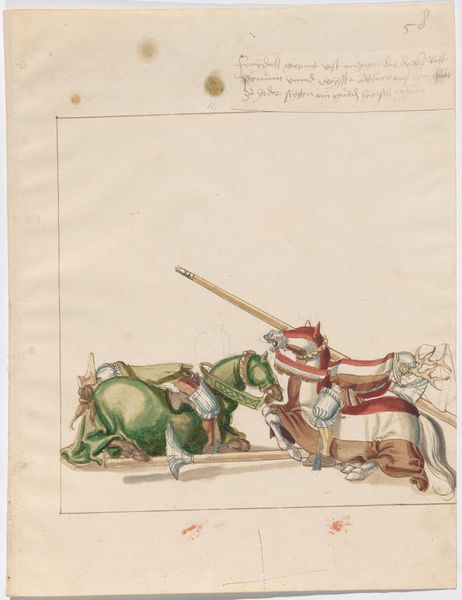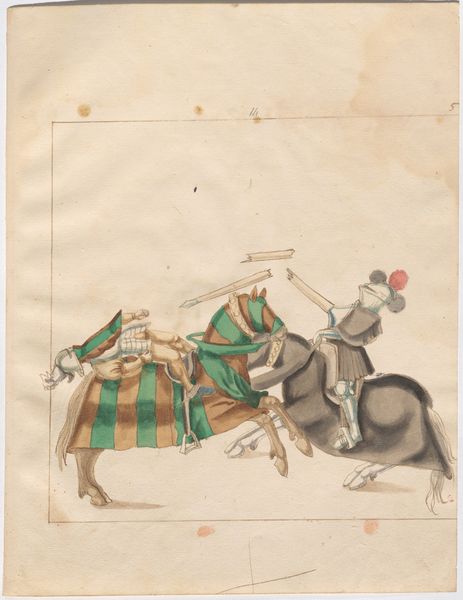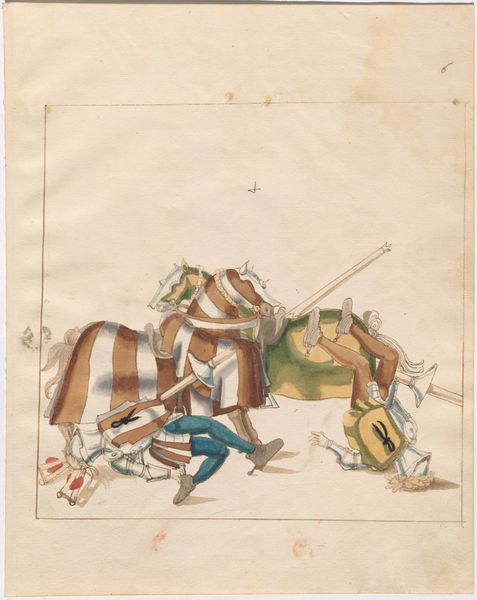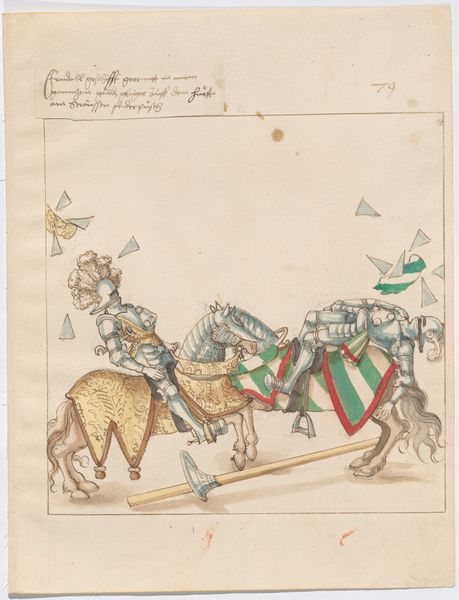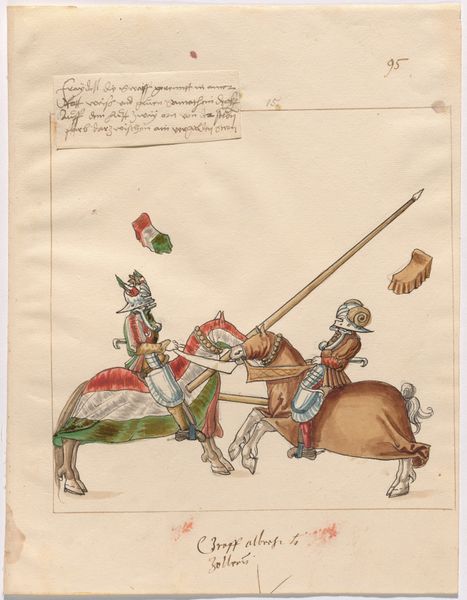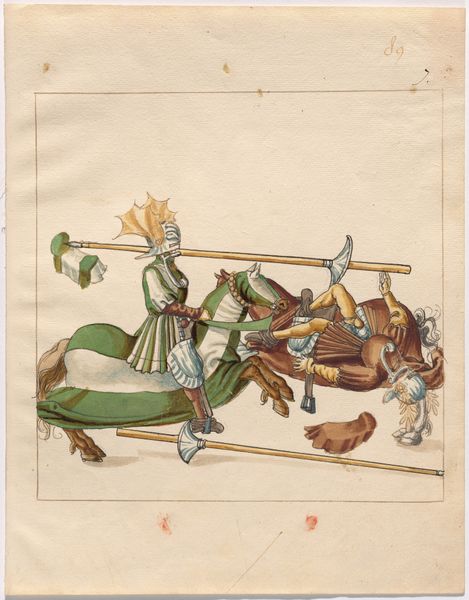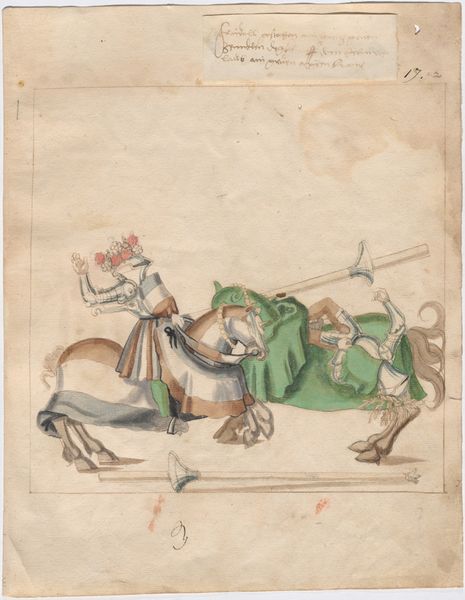
drawing, watercolor
#
drawing
#
narrative-art
#
11_renaissance
#
watercolor
#
watercolour bleed
#
watercolour illustration
#
history-painting
Dimensions: sheet: 33 × 26.4 cm (13 × 10 3/8 in.)
Copyright: National Gallery of Art: CC0 1.0
Editor: Here we have a watercolor drawing titled "German Joust of Peace," made around 1512-1515 by an anonymous artist. I’m struck by the dynamism, the sense of movement captured with such delicate washes of color. What compositional elements stand out to you? Curator: The stark contrast in the composition is indeed compelling. Note how the artist utilized diagonal lines, most prominently with the lances, to bisect the picture plane and generate a feeling of depth. The chromatic arrangement also warrants scrutiny. Editor: The use of color feels intentional but subtle. Can you elaborate? Curator: Certainly. Observe the muted palette, primarily earth tones punctuated by flashes of green and hints of red. This careful orchestration of hue and value creates a sense of restraint, which contrasts ironically with the dramatic subject matter. Do you notice how the patterning of the horse coverings serve to flatten and destabilize the picture plane? Editor: I see that now. It disrupts any illusion of deep space, drawing attention back to the surface. Curator: Precisely. Moreover, the strategic placement of white space around the figures amplifies the sense of precariousness, highlighting the ephemeral nature of the jousting event itself. Consider, too, the material qualities. How does the bleeding of the watercolour contribute to the overall affect? Editor: It softens the edges, gives it an ethereal quality, almost like a memory. This analysis really highlights the tension between the supposed violence of the subject and the tranquility of the medium. Curator: Indeed, this formalist reading encourages a nuanced interpretation, moving beyond mere representation. Editor: I appreciate that, now I'm seeing it with completely different eyes.
Comments
No comments
Be the first to comment and join the conversation on the ultimate creative platform.
